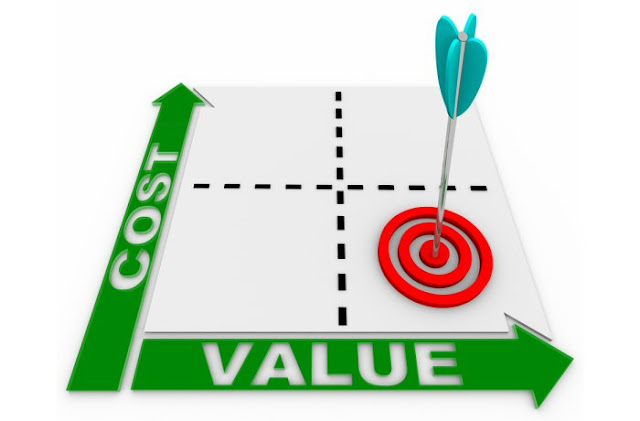The former founder of Taiwanese top online fashion brand, Mayuki Chou has shared her opinions on return rate via her Facebook page and SmartM (our Taiwanese content partner).
The former founder of Taiwanese top online fashion brand, Mayuki Chou has shared her opinions on return rate via her Facebook page and SmartM (our Taiwanese content partner).
There are some good pointers for e-commerce merchants so we are summarizing and translating it to English here.
According to Mayuki, there is no "industry-standard", as return rate hugely relies on factors below:
• What products are you selling?
• What is the average price of your products?
• Where are you selling (marketplace)?
• What are your target customer group?
Therefore, there is no "golden formula" out there. Instead of referring to industry-standard, it's best to refer and compare with your peers (or competitors) who are in the similar business as yours.
Many are over-obsessed over numbers like "what is the best conversion rate?", "what is the normal return rate?" etc. The fact is, when you are selling different products with different pricing, and via different channels, should you benchmark against the so called industry-standard?
Mayuki adds that even with the same products and pricing, she has experienced return rate ranging from 3% to 20% across the marketplaces she was selling.
So, what are the major factors behind return rate?
Some online marketplaces allow bigger window of return, furthermore buyers can easily apply return with the convenience of just a click, without any reason required. Naturally this "encourages" return, so return rate is definitely higher, which Mayuki has shared that there is a certain marketplace in Taiwan with average return rate as high as 50%. Conclusion? Nightmare for merchants.
Ideally marketplaces should ask for valid reason before accepting return request by buyers, even better if they offer buyers shopping credit to avoid return.
It will only be meaningful if you compare return rate with sellers within the same industry, and within the same marketplace. For example, Mayuki mentions that her return rate ranges from 15% to 20% in the marketplace mentioned earlier. If compared to the average 50% return rate there, 15% to 20% does not seem like the issue lies with Mayuki.
Of course, it is more likely for buyers to request for return if product quality is below the expectation. What is the "earned value" of buyers with the price they are paying you for the product?
This is more common for fashion items where as the product photos are too nice but buyers might be disappointed with the quality after receiving the real thing.
In some cases, the reality only kicks in after wearing the clothes. Some clothes look great on models but not on ordinary people, so naturally buyers will ask for return.
What sellers can do here is to emphasize on quality control and consider what kind of products to source, so that return rate can be minimized.
There are many cases when measurements stated on the web pages are not accurate at all, or it is not easy for buyers to understand. Therefore, it is likely for buyers to pick a wrong size then ask for return.
When buyers return, they will normally just tell you that "the size does not fit". They will rarely share with you that your size / measurement table is not accurate, or they don't understand at all. This might be something that sellers are neglecting.
Besides that, Mayuki also highlights color difference as one of the reasons behind return, which is due to photography or post-production process.
Return rate for lower priced items will have lower return rate in general. This is because with cheaper price purchase, buyers don't set high expectation hence the acceptance level is tolerated.
However, Mayuki does not suggest to just focus on lower priced items, as this might not do any good to your brand development even when the buyers are tolerating with you.
According to Mayuki, it is best for sellers to work towards the direction of high cost performance index (高cp值), attractive price yet customers will feel good when buying from you (value for money).
Mayuki doesn't encourage running discount promotions too frequently, as this is one of the factors behind return. For example, the same item your customer bought yesterday is on 50% off today, will he or she ask for return, and buy again?
Even though running discount promotions can stimulate your sales, but Mayuki compares this to steroid, and she shares that there are many aspects you should review when your sales is not up to expectation.
Blatantly running sale promotions might give you quick solutions, but on another hand blind you from the actual problem. If you are just running discount to solve your current problem, you might face more challenges soon.
As a conclusion, return serves as an alert for sellers to review what you have done wrongly. Every return case represents an unhappy customer, even if you sell a lot but high return rate will kill off your efforts.
There are some good pointers for e-commerce merchants so we are summarizing and translating it to English here.
What is the average return rate for e-commerce?
According to Mayuki, there is no "industry-standard", as return rate hugely relies on factors below:
• What products are you selling?
• What is the average price of your products?
• Where are you selling (marketplace)?
• What are your target customer group?
Therefore, there is no "golden formula" out there. Instead of referring to industry-standard, it's best to refer and compare with your peers (or competitors) who are in the similar business as yours.
Many are over-obsessed over numbers like "what is the best conversion rate?", "what is the normal return rate?" etc. The fact is, when you are selling different products with different pricing, and via different channels, should you benchmark against the so called industry-standard?
Mayuki adds that even with the same products and pricing, she has experienced return rate ranging from 3% to 20% across the marketplaces she was selling.
Read also: eCommerce potential in Southeast Asia, through the eyes of Taiwanese
Factor #1: How e-marketplace handles return?
Some online marketplaces allow bigger window of return, furthermore buyers can easily apply return with the convenience of just a click, without any reason required. Naturally this "encourages" return, so return rate is definitely higher, which Mayuki has shared that there is a certain marketplace in Taiwan with average return rate as high as 50%. Conclusion? Nightmare for merchants.
Ideally marketplaces should ask for valid reason before accepting return request by buyers, even better if they offer buyers shopping credit to avoid return.
It will only be meaningful if you compare return rate with sellers within the same industry, and within the same marketplace. For example, Mayuki mentions that her return rate ranges from 15% to 20% in the marketplace mentioned earlier. If compared to the average 50% return rate there, 15% to 20% does not seem like the issue lies with Mayuki.
Factor #2: Product quality, "earned value"
Of course, it is more likely for buyers to request for return if product quality is below the expectation. What is the "earned value" of buyers with the price they are paying you for the product?
This is more common for fashion items where as the product photos are too nice but buyers might be disappointed with the quality after receiving the real thing.
In some cases, the reality only kicks in after wearing the clothes. Some clothes look great on models but not on ordinary people, so naturally buyers will ask for return.
What sellers can do here is to emphasize on quality control and consider what kind of products to source, so that return rate can be minimized.
Factor #3: Information provided on the website
There are many cases when measurements stated on the web pages are not accurate at all, or it is not easy for buyers to understand. Therefore, it is likely for buyers to pick a wrong size then ask for return.
When buyers return, they will normally just tell you that "the size does not fit". They will rarely share with you that your size / measurement table is not accurate, or they don't understand at all. This might be something that sellers are neglecting.
Besides that, Mayuki also highlights color difference as one of the reasons behind return, which is due to photography or post-production process.
Factor #4: Price, cost performance index
Return rate for lower priced items will have lower return rate in general. This is because with cheaper price purchase, buyers don't set high expectation hence the acceptance level is tolerated.
However, Mayuki does not suggest to just focus on lower priced items, as this might not do any good to your brand development even when the buyers are tolerating with you.
According to Mayuki, it is best for sellers to work towards the direction of high cost performance index (高cp值), attractive price yet customers will feel good when buying from you (value for money).
Factor #5: Discount promotions
Mayuki doesn't encourage running discount promotions too frequently, as this is one of the factors behind return. For example, the same item your customer bought yesterday is on 50% off today, will he or she ask for return, and buy again?
Even though running discount promotions can stimulate your sales, but Mayuki compares this to steroid, and she shares that there are many aspects you should review when your sales is not up to expectation.
Blatantly running sale promotions might give you quick solutions, but on another hand blind you from the actual problem. If you are just running discount to solve your current problem, you might face more challenges soon.
As a conclusion, return serves as an alert for sellers to review what you have done wrongly. Every return case represents an unhappy customer, even if you sell a lot but high return rate will kill off your efforts.
This article is translated and edited from SmartM.














COMMENTS